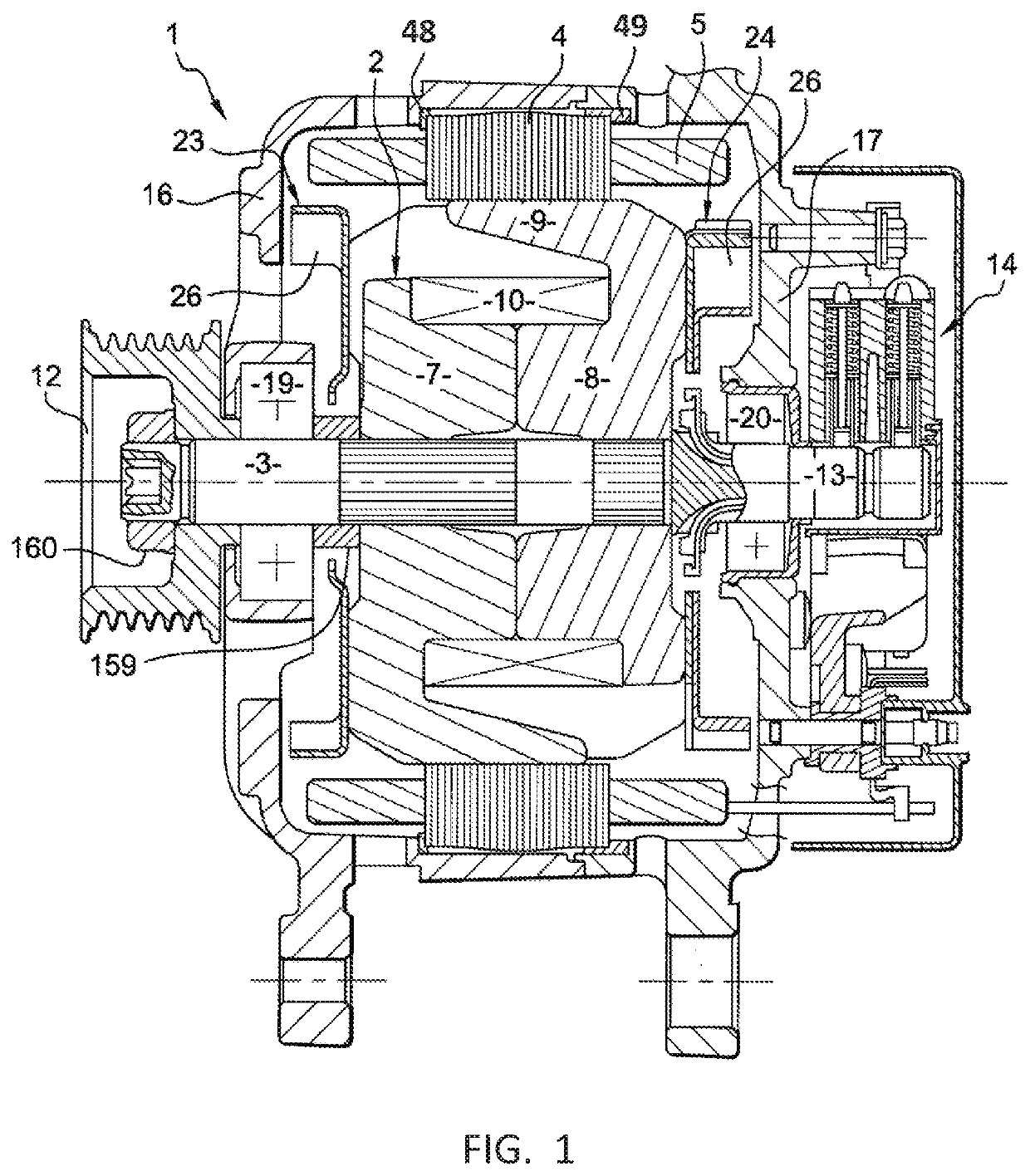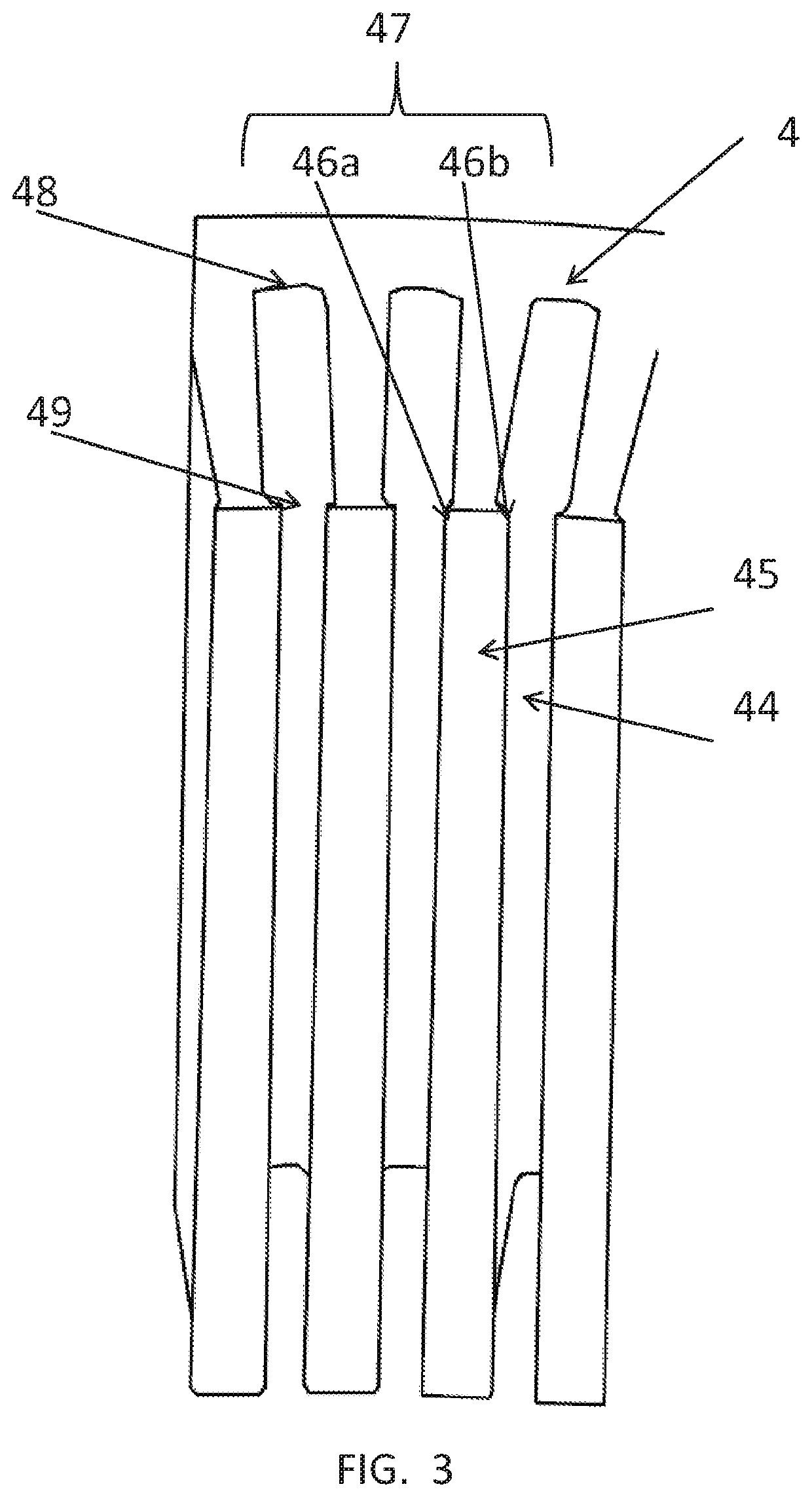Method for making stator of rotary electrical machine
a technology of rotary electrical machines and stators, which is applied in the direction of dynamo-electric machines, dynamo-electric components, magnetic circuit shapes/forms/construction, etc., can solve the problems of affecting occupying more space in the notch, and winding is not well compacted, so as to achieve simple and rapid formation of closure elements, without damaging the wire, and without reducing the performance of the electrical machine
- Summary
- Abstract
- Description
- Claims
- Application Information
AI Technical Summary
Benefits of technology
Problems solved by technology
Method used
Image
Examples
first embodiment
[0082]In the case of the first embodiment, according to one embodiment the tool 60 retains the same axial position relative to the stator. This then provides closure elements 451, 452a, 453 and 454 which are situated on the same radial plane. According to another embodiment, it would be possible to carry out relative axial displacement of the tool 60 in relation to the stator 4. This relative axial displacement is carried out for example at the same time as the relative rotation of the stator 4 in relation to the tool 60. This then means that the closure elements 451, 452a are situated on a first radial plane, and the closure elements 453 and 454 are situated on a second radial plane, these first and second radial planes being different. For example, the first and second radial planes are situated at a distance greater than two metal sheets.
second embodiment
[0083]In the second embodiment, the tool 60 in FIG. 7 and the one in FIG. 8 can be situated on first and second substantially different radial planes. For example, the first radial plane and the second radial plane are spaced axially by a distance equal to at least two metal sheets. This then means that the closure elements 451, 452a are situated on the first radial plane, and the closure elements 453 and 454 are situated on the second radial plane, these first and second radial planes being different.
[0084]It will be appreciated that, as already stated for FIG. 7, N tools 60 could also be provided, distributed axially on the notch 42. They would then give rise to the formation of 2 N closure elements distributed axially. There would also be better compacting of the winding part 52 of the notch 42, thanks to the radial supports distributed axially. For this purpose, it is possible to provide a single tool of the said. N tools 60, in order to facilitate their manipulation.
[0085]FIG. ...
embodiment 1
[0098] the tool for the notches 41, 42 and 43 is identical. According to an example of this embodiment, if only one relative rotation of the stator takes place in relation to the tool, there are then the closure elements 451, 452a, 453, 454, 455 and 452b which are situated on the same radial plane. There is then in particular a single closure element 452 formed. by the two elements 452a and 452b.
PUM
 Login to View More
Login to View More Abstract
Description
Claims
Application Information
 Login to View More
Login to View More - R&D
- Intellectual Property
- Life Sciences
- Materials
- Tech Scout
- Unparalleled Data Quality
- Higher Quality Content
- 60% Fewer Hallucinations
Browse by: Latest US Patents, China's latest patents, Technical Efficacy Thesaurus, Application Domain, Technology Topic, Popular Technical Reports.
© 2025 PatSnap. All rights reserved.Legal|Privacy policy|Modern Slavery Act Transparency Statement|Sitemap|About US| Contact US: help@patsnap.com



